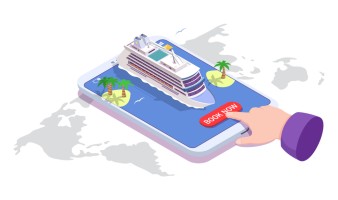
How to Make a Travel Website
Creating
a travel website involves several steps, from planning and designing to
development and deployment. Here's a general outline to help you get started:
1. Define
Your Goals:
Before
you start building your website, clarify your goals. Are you creating a
platform for booking flights, hotels, and activities, or are you focusing on
providing travel guides and information?
2. Choose
a Domain Name and Hosting:
Select a
domain name that reflects your website's purpose and is easy to remember.
Choose a reliable web hosting provider to ensure your website is accessible and
loads quickly.
3. Plan
Your Content:
Outline
the pages you want on your website, such as home, destinations, blog, contact,
booking, etc. Plan the structure and layout of each page.
4. Design
and Layout:
Design
the visual aspects of your website. Choose a clean and user-friendly layout.
Consider the color scheme, typography, and overall aesthetics. You can hire a
web designer or use website builders that offer customizable templates.
5.
Develop Your Website:
Depending
on your technical skills, you can choose one of the following approaches:
- Website
Builders: Use platforms like WordPress, Wix, Squarespace, or Weebly. They offer
user-friendly interfaces and pre-designed templates.
- Custom
Development: If you have coding skills, you can build your website from scratch
using HTML, CSS, and JavaScript. Frameworks like Bootstrap or libraries like
jQuery can speed up development.
- Hire
Developers: If you're not comfortable with coding, consider hiring a web
developer or a development team to bring your ideas to life.
6.
Content Creation:
Start
creating content for your website. Write engaging and informative travel
guides, blog posts, and descriptions for destinations, activities, and
accommodations. Use high-quality images and videos.
7.
Implement Features:
Depending
on your website's purpose, consider integrating features such as:
- Search
and Booking: If your website allows users to book flights, hotels, and
activities, you'll need a booking system with search functionality.
- Maps
and Location Information: Integrate interactive maps to show destinations,
points of interest, and itineraries.
- User
Reviews and Ratings: Include a system for users to share their travel
experiences and rate different services.
- Social
Media Integration: Add social media buttons to encourage sharing and
engagement.
8.
Optimize for SEO:
Optimize
your website for search engines to improve its visibility. Use relevant
keywords in your content, optimize images, and ensure your website loads
quickly.
9. Test
Your Website:
Before
launching, thoroughly test your website across different browsers, devices, and
screen sizes to ensure it's responsive and functions properly.
10.
Launch and Promote:
Once
you're satisfied with the testing, launch your website. Promote it through
social media, email marketing, and other online channels to attract visitors.
11.
Maintain and Update:
Regularly
update your content and keep your website secure by installing updates and
security patches. Monitor website analytics to understand user behavior and
make improvements accordingly.
Remember
that creating a successful travel website takes time and effort. Focus on
providing value to your visitors and creating a user-friendly experience that
encourages them to explore and engage with your content.






















